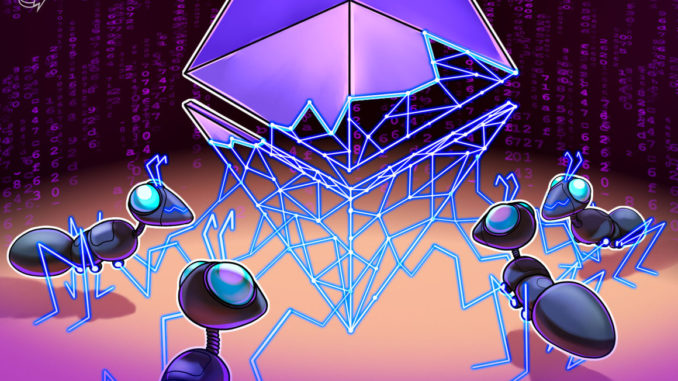
Core Ethereum (ETH) developer Tim Beiko has outlined a series of suggestions and expectations about the upcoming Merge for applicatio and protocol developers on Ethereum.
For the average users of apps and protocols, Beiko simply suggested testing things out to ensure nothing is broken as more tests are executed. He tweeted on May 24 “Run stuff, if something is unclear or broken, leave a comment.”
Yes! Run stuff, if something is unclear or broken, leave a comment, as you probably aren’t the only one with that issue User PoV guides, how-go’s, etc. are always super useful, too! https://t.co/tyWqgVBSuc
— Tim Beiko | timbeiko.eth (@TimBeiko) May 23, 2022
Beiko urged users and developers to “pay attention and make sure you are ready” for the Merge.
The Merge is the highly complex and long-awaited moment when the Ethereum network switches from Proof-of-Work (PoW) to Proof-of-Stake (PoS) consensus. At that point, it will be known as “Consensus Layer” and is expected to occur in August this year.
Testing on several testnets has been focused on ensuring there are no cross-client issues or that existing applications don’t entirely break after the Merge. Beiko pointed out in a separate Twitter thread that such problems are likely to be rare because “99% of changes affect the protocol layer,” while “there are almost no changes done to the application layer.”
A few thoughts on #TestingTheMerge:
1. Protocol layer testing != application level testing. Client + protocol testing teams focus mostly on changes to the protocol not causing cross-client issues or breaking existing applications.
— Tim Beiko | timbeiko.eth (@TimBeiko) May 23, 2022
Beiko stated that developers should be aware there will be two significant changes to how smart contracts work with the Merge. First, he reminded them that the method for beacon randomness, which helps run applications, will change. This will be necessary for the switch to PoS, and was published in an Ethereum Foundation (EF) update last November.
The second change will be that block times will shorten from 13 seconds per block to 12. As a result of this change, smart contracts that use block production speed as a measure of time will run one second faster after the Merge takes place.
Beiko showed an air of confidence that despite the delays in executing the Merge, potential problems have been consolidated into a single echelon.
“Aside from cross-client testing and these two edge cases, the biggest risk of disruption is in “tooling and infra pipelines”.”
He concluded by assuring if any other issues arise during the thorough testing and shadow forks taking place, the Merge would be further delayed to ensure the security of the network.
“At any point, if we find issues, we’ll obviously take the time to fix + address them before moving forward. Only then will we think about moving mainnet to proof of stake.”
ETH investors who are worried about coins being unlocked and dumped when the Merge takes place can rest easy. DeFi educator Korpi on Twitter explained on May 23 that the ETH staked on the Beacon Chain now cannot be unlocked without a later upgrade to the network once the Merge takes place. This includes rewards earned from staking.
Related: ‘Huge testing milestone’ for Ethereum: Ropsten testnet Merge set for June 8
He also stated that once coins are unlocked, they will be released in tapers rather than all at once and that those coins are often an investor’s “never-sell stack” that are not likely to be sold.
There are currently 12.6 million ETH staked on the Beacon Chain. The Beacon Chain was one of the first steps taken toward making Ethereum a PoS network, launched in December 2020.






Be the first to comment